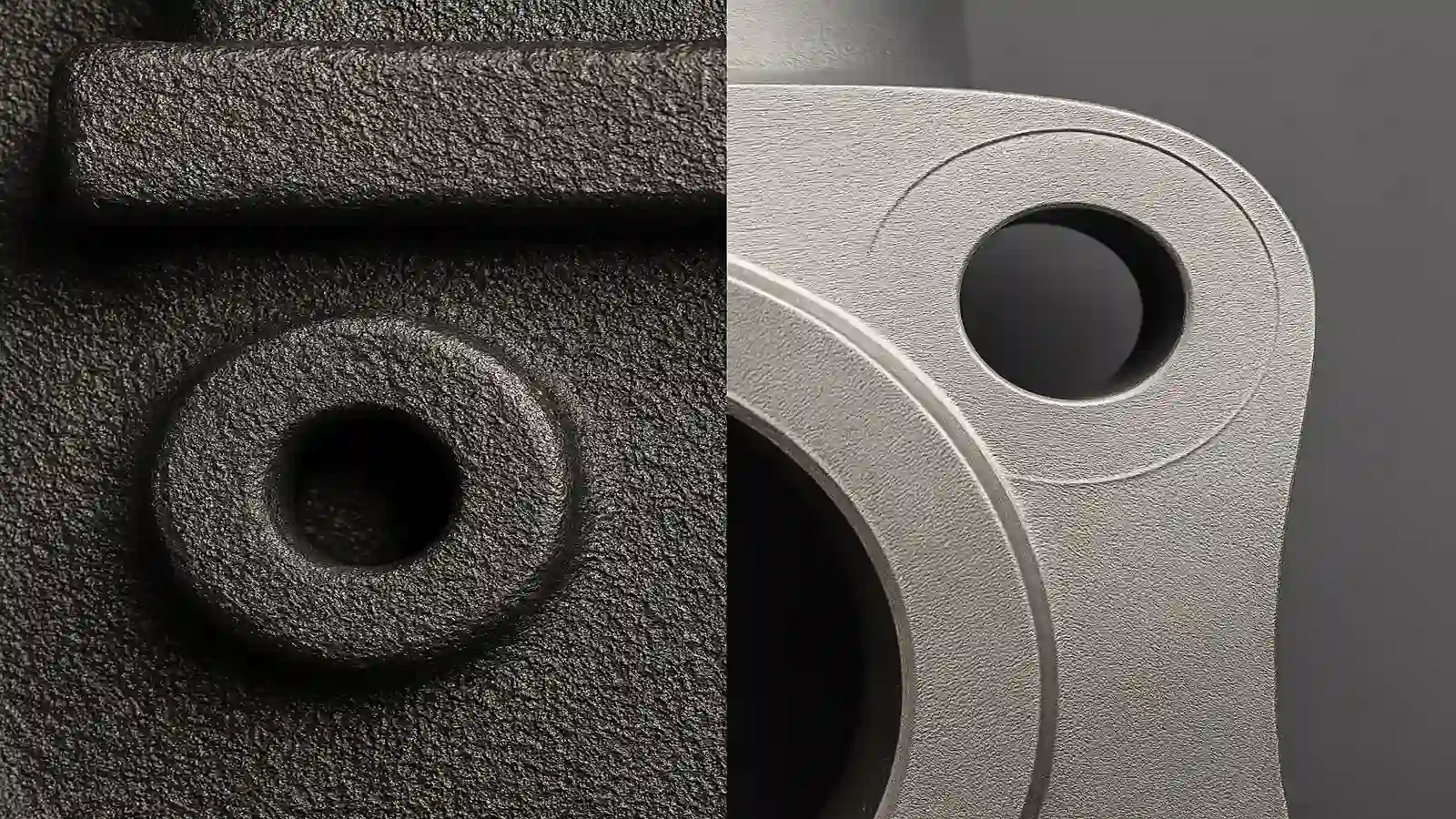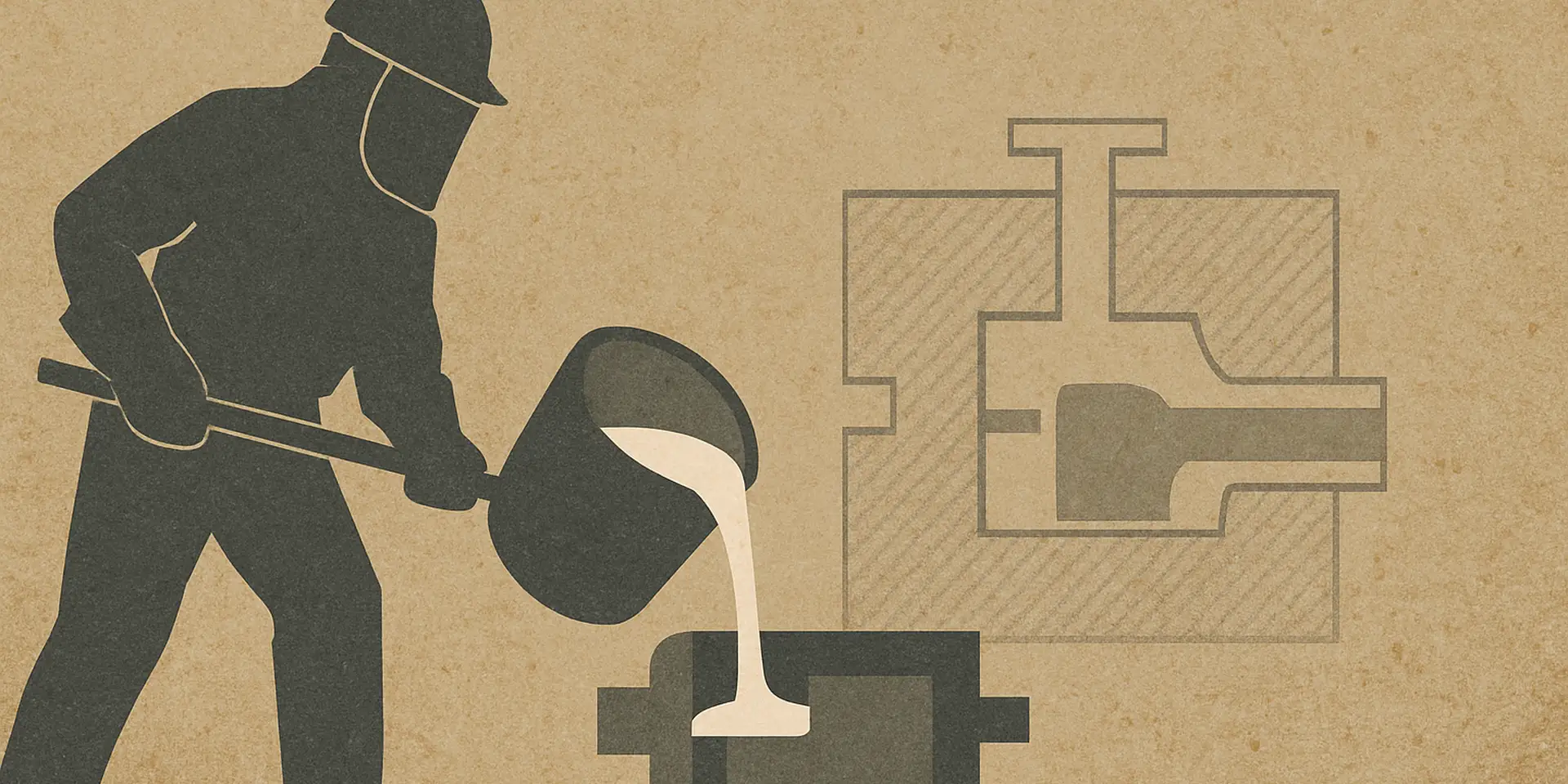샌드 캐스팅과 다이 캐스팅: 주요 차이점, 장단점 및 최상의 애플리케이션
When selecting the right manufacturing process for metal components, sand casting and die casting often emerge as the two leading options. While both methods aim to shape molten metal into precise parts, they differ significantly in technique, cost, material compatibility, and application. In this article, we compare sand casting and die casting in detail to help you determine which process is best suited to your production needs.
What is Sand Casting?
Sand casting is a traditional manufacturing process that uses a sand mold to form metal parts. A pattern of the desired part is pressed into special sand to create a mold cavity. Molten metal is then poured into this cavity and allowed to solidify.
Advantages of Sand Casting:
- Suitable for complex shapes and large components
- Low tooling cost
- Compatible with a wide range of metals, including iron, steel, aluminum, and bronze
- Ideal for low to medium production volumes
Disadvantages:
- Surface finish is generally rougher
- Lower dimensional accuracy
- Slower production speed
What is Die Casting?
Die casting is a high-pressure process where molten metal is injected into a steel mold (called a die) under controlled conditions. It is typically used for non-ferrous metals like aluminum, zinc, and magnesium.
Advantages of Die Casting:
- Excellent surface finish and high dimensional accuracy
- Fast production cycles, ideal for high-volume manufacturing
- Suitable for thin-walled parts and intricate geometries
Disadvantages:
- Higher tooling and die costs
- Limited to non-ferrous metals
- Less economical for low-volume runs
Key Differences at a Glance
| Feature | 모래 주조 | 다이 캐스팅 |
|---|---|---|
| Mold Material | 모래 | Steel (permanent) |
| Tooling Cost | Low | High |
| Surface Finish | Rougher | Smooth |
| Production Volume | Low to medium | Medium to high |
| Metal Compatibility | Ferrous and non-ferrous | Mostly non-ferrous |
| Ideal Part Size | Small to very large | Small to medium |
Which One Should You Choose?
The right casting method depends on several factors:
- If you need large or ferrous parts in low quantities, sand casting is more economical and flexible.
- If you need high-volume production with tight tolerances, die casting offers superior speed and precision.
- If you need design flexibility, sand casting can accommodate more complex and varied geometries.
Common Applications
Sand Casting:
- Engine blocks
- Industrial machinery parts
- Pump and valve housings
Die Casting:
- Automotive transmission cases
- Consumer electronics enclosures
- Household appliance components
Conclusion
Both sand casting and die casting offer distinct advantages depending on your project’s scale, budget, and material requirements. For custom ferrous parts in moderate quantities, sand casting is often the better fit. For high-volume production of precise non-ferrous parts, die casting delivers efficiency and quality. Understanding the differences between these processes helps you make informed decisions and optimize your manufacturing outcomes.


